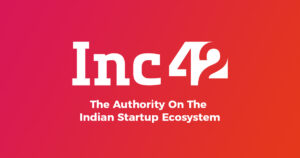OKRs — an acronym for Objectives and Key Results — is a framework to manage a company’s goals, objectives, and measurement systems. It was invented by Andy Grove, Co-founder of Intel and a legendary management guru in the past century. Andy also talks about the tenets behind OKRs in one of my favourite management books, High Output Management.
OKRs is a simple and effective framework that defines three to five key objectives that any company or organisation is trying to strive for and what key results would measure whether they can get there.
John Doerr — one of the most successful VCs at Kleiner Perkins — brought this to Google and other younger companies in Silicon Valley in the late ’90s and early 2000s.
In fact, he has just authored a book “Measure What Matters (OKRs) – the simple idea that drives 10X growth” on this topic (haven’t read the book yet but seems highly recommended).
Source: https://inquentia.com/
I personally learnt about OKRs during my three-year stint at Google in the late 2000s and found it to be a critical component of the company’s success.
Every company, especially startups, which is growing rapidly, has lots of opportunities and challenges to drive their growth. They are hiring like crazy, they are opening new businesses, scaling up existing ones, expanding geographies, perhaps acquiring companies, etc.
Four key questions emerge from this:
Challenge #1: What is our big, hairy, audacious goal (BHAG) for the next year, and why?
Most companies are founded on something — they want to change in the world. They may even manifest it in a mission or a vision statement (broadly, I’m not a big fan). On an ongoing basis, the companies focus on the day to day, quarter to quarter execution focus. And they should. However, the company loses track of what is the larger picture, which will meaningfully help them get closer to their eventual mission.
To make this concrete, let us take the example of a professional sports team (inspired by @jhoff). Your team’s owners may want it to become, say, the most valuable franchise (MVF) in the league in a few years. Now, on a day to day basis, you may just be focused on winning the next match or having a winning month or such. Don’t get me wrong; that’s a critical component of execution. However, to become the MVF, your team needs to think about more than one match or a stage of a professional league.
That’s where OKRs can help. For the objective of becoming the most valuable franchise, one may need to set key results along the way.
Image Credit: Amit Somani, Managing Partner at Prime Venture Partners
Beyond the obvious, winning a championship, additional, incremental key results may look like reach qualifiers every year, or have a mix of rookies and very experienced players so they can win year after year, or even have a highly engaged and excited fan base.
These get further broken down into incremental, quarterly objectives and measurement criteria. Lastly, each team, whether it’s a founder or a front-line engineer, building the plans to be able to accomplish their key results.
Answer #1 Focus on what matters: Having a big, hairy, audacious goal and highly measurable quarterly results help focus the company, its founders, and the entire team on what really matters this year and why!
Action Item: What are your three to five OKRs for the year (and subsequently this quarter) that will help materially move the needle in your team or organisation?
Challenge #2: Is everyone working here making a difference, and do they feel like they are?
As companies start growing rapidly, the culture changes from the small team sitting around a table to dozens, even hundreds of people. However, as the number of employees grows, the need for communication grows exponentially, and it is not possible to have daily breakfast meetings across 100’s of people. Some interesting problems emerge:
- The founders and other leaders appear “distant” and possibly inaccessible.
- People don’t know (or feel they don’t know) about what is going on.
- Cross organisational or cross geography politics start emerging.
- There is a lot of Brownian motion, and yet the “needle” is not moving.
- Many individuals and teams feel like they are working hard but are not being recognised or rewarded.
The reason these problems emerge is sheer rapid growth and a rapidly evolving business landscape.
So, how do OKRs help? They do three things:
- Answer #2 Create alignment: They are a low cost, transparent, and highly effective way for creating alignment. One of the key tenets to make OKRs successful is to have everyone in the team share their OKRs openly and transparently with the entire company. They can be put on the company’s intranet. Now, every employee can see the OKRs of the founders, organisation heads of every function, and even their peers, etc. Likewise, everyone can see every individual’s OKRs and their history.
- Answer #3 Encourage ambitious objective setting and weed out mediocrity: Two key things happen here. One, since everyone’s OKRs are public, you see if everyone is being audacious enough and pushing the envelope. One additional feature of OKRs is if everyone’s self-assessment at the end of each time period is up for display. This is not true for your manager’s assessment of you but your own assessment. This way, thanks to the transparency, you are collectively pushing setting ambitious targets and weeding out either sandbagger, or worse, yet under-performers without any intervention. People become self-aware and push themselves to achieve their best. If they are consistently not able to do it but feel others are, they may voluntarily seek to get new assignments or leave.
- Answer #4 Create organisation commitment: In addition to having visibility, if you don’t see alignment in your goals or that of your team with the larger organisation, you can initiate a discussion or even a debate to seek clarification and eventual alignment. Now, everyone sees the overall company mission, alignment, debates, discusses, and aligns their set of OKRs and then gets down to executing them.
Commitment is what transforms a promise into a reality — Abraham Lincoln
Action Item: Discuss with your team and manager if you would be willing to create open OKRs and document results openly. For extra credit, once you are done with your own team, convince one other team that you work closely with to do their OKRs and share them with you and your team.
I assure you both will be a fun discussion!
Challenge #3: Are we there yet?
Once you have focus, alignment, and commitment, everyone can start to track their own OKRs, and those of other teams effortlessly. You can and should do monthly meetings with your manager/team to ensure you are along the way and re-adjust as you go along.
Besides, it is the company’s leadership teams’ responsibility to keep the company abreast of how the company is performing on its overall objectives. Cascading down, each team leader or even individual contributor can keep an eye on whether what they are doing is affecting the eventual company OKRs in a meaningful and measurable way.
Action Item: Even if you haven’t had OKRs yet, publish the top three to five things you or your team has accomplished last quarter (admittedly, it will be retroactive, but be honest).
ANSWER #5 Tracking and Re-alignment: Make the scorecard simple, public, and effortless. It gives visibility to re-allocate capital and human resources where required to deliver on the overall OKRs.
Putting it all together
OKRs are simple and a very lightweight way to deliver 10X results.
That said, these are not a panacea to solve all problems. They are a means to the end.
Extra action item: While OKRs are meant for professional organisations, you can use them for your personal life, your family, or even your community. See if you can set up OKRs for yourself for the next 12 months and share it with one loved one!
[Note: The FACTS (Focus, Alignment, Commitment, Tracking, Stretch) acronym that I use above is derived from John Doerr’s book.]
[This article first appeared on LinkedIn]
(Disclaimer: The views and opinions expressed in this article are those of the author and do not necessarily reflect the views of YS.)










